Planting weigela and caring for her
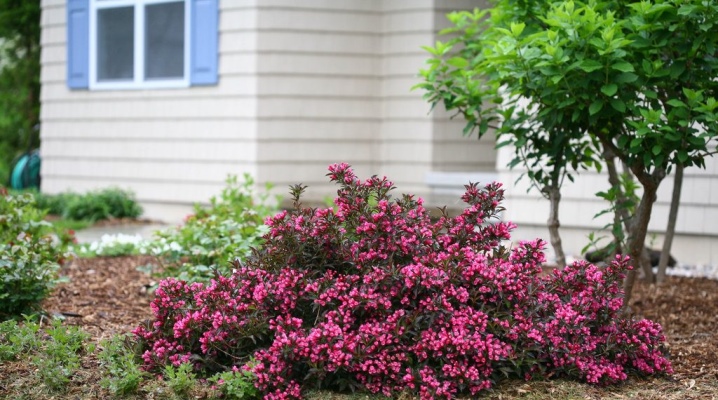
Weigela enjoys a well-deserved popularity among professional designers in our country. In other states, amateurs are also actively involved in it. It's time to fix this annoying defect - and carefully deal with such a bush.
Disembarkation dates
This plant comes from the eastern and southeastern regions of Asia. One species even grows wild on the island of Java. The northernmost natural region where you can find wild weigela is Primorsky Krai. Therefore, the cultivation of shrubs is possible only with a sufficiently early planting. Otherwise, he will not have time to take root and, moreover, will not please with his flowering.
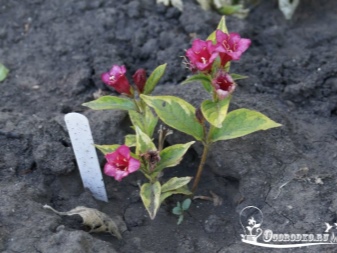
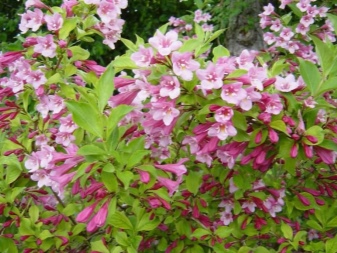
The optimal time for planting a crop is in the spring. But you need to place it in open ground as early as possible so that the buds do not have time to bloom yet. In late March and throughout April, the bushes are planted in the south. In the middle lane and in the vicinity of Moscow, this procedure should be carried out in April or even in May. In the fall, planting weigela is possible only theoretically, since the risk of damage to the crop during the winter is too great. No shelter can help out if the normal landing time is violated.
The deadline for planting flowers varies from region to region. So, the maximum landing period in the Krasnodar Territory is limited to half of May. In the second half of the month, it is already too hot, which lowers the chances of success. But in the Moscow region, in the first third of summer, you often have to face damp and cool weather. As a result, the permissible landing time sometimes reaches the first days of July.
But a lot depends, of course, on the variety and on the actual weather. In the fall months, the likelihood of a successful outcome depends on whether the root system is being used - open or (more preferably) closed. In this case, you will also have to take care of reliable protection during wintering.
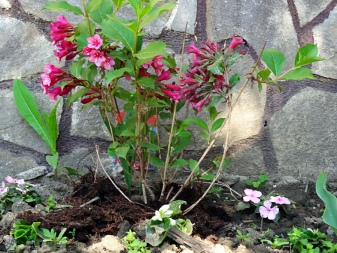

Features of cultivation in different regions
First, you need to figure out exactly how to grow the original shrub in the Urals and Siberia. In these regions, it is required to choose the varieties that are most resistant to cold. Only varieties that can withstand frost up to 40 degrees can guarantee an excellent result. In any case, we are talking only about short-term cold snaps, and the resistance to a very harsh winter is limited. For the Ural region, the Middendorf and Maksimovich varieties have been zoned.

Since the Leningrad region is characterized by rather harsh conditions, it is necessary to plant a plant in it only with careful shelter for the winter. HIt should be borne in mind that in the north-west of Russia, as well as east of the Volga, winter colds do not recede for a long time, while the risk of frost return is high. Therefore, you should definitely not rush to disembark. It is recommended to dig holes with a depth of 0.4 m.
As strictly as possible, it is necessary to monitor compliance with the requirements for feeding and improving the properties of the soil.
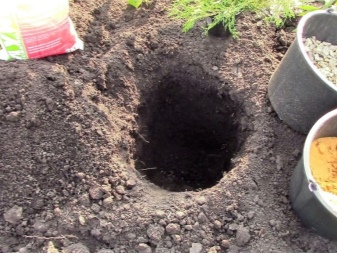
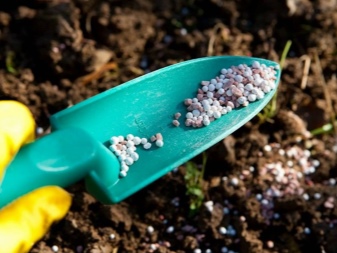
Suitable location and soil preparation
Since the plant is southern, the conditions in the garden must be observed as strictly as possible. The slightest deviation from the norm threatens with loss of performance and deterioration of decorative properties. Weigela should not be planted on an area open to northern winds.Let it be a hill, accessible to other wind directions, but not from the north. At the same time, ideally, there should be no drafts at all - because of them, the inflorescences often turn out to be knocked down to the ground.
It is very good if the culture can be planted on the southern slopes. The close location of any buildings, even "simple" fences, helps to increase the protection against drafts. The Asian shrub grows best on sandy loam and loam.
Experienced farmers are advised to seek a neutral or, in extreme cases, slightly alkaline soil reaction. Optimal, of course, if it is already achieved by nature itself.


The next step is to check the composition of the land. There should be a lot of humus and trace elements. Planting pit preparation always includes backfilling with gravel or other drainage filler. Black soil with the addition of nitrophoska is placed on top. Instead of black soil, other types of fertile land can be used.
We take into account the characteristics of the variety
When planting a pink weigela, you can almost not be afraid of cold weather ("almost" by the standards of this thermophilic plant). In winter, you can equip the simplest shelter for him - and that's it. Spruce paws are perfect as such a shelter.
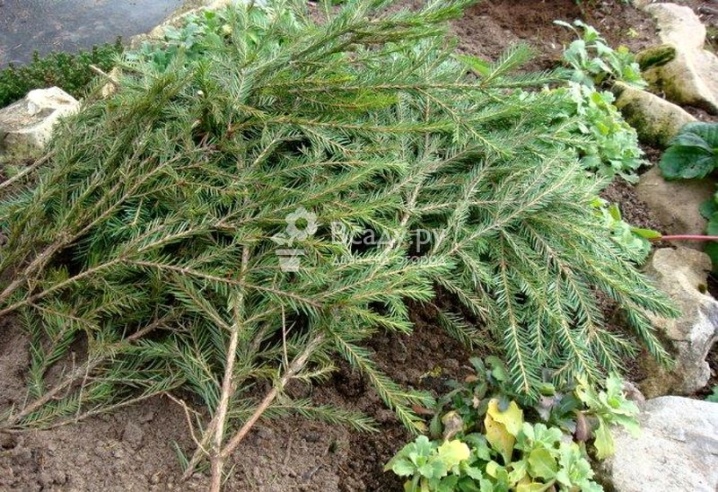
Deserves attention Minor Black. This variety, on the contrary, has a very weak resistance to winter, even early return frosts often ruin it. Therefore, the timing of planting in the spring must be observed as strictly as possible, and in the fall, do not try to do anything with this plant. Insufficient lighting is also critical for Minor Black. In such conditions, the branches lignify much faster than usual, and the chances of waiting for flowering are almost zero.
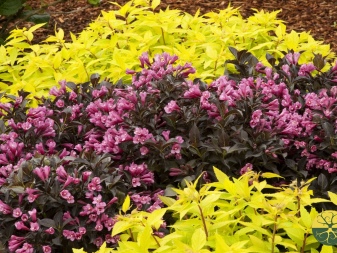
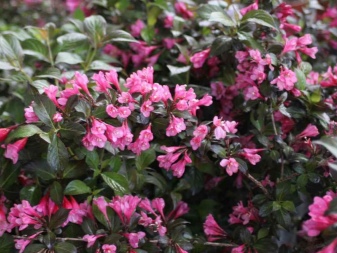
Thinking about planting variegated weigela, it must be clearly understood that such a feature of a plant is equated with its pathological development. Therefore, these crops must definitely be abandoned in areas with particularly harsh conditions. For plants with variegated leaves, good sunshine during the day is very important. If this is not ensured, one cannot count on a decent result. The maximum danger is posed by cold winter winds; the culture will have to be protected from them very carefully. The best way to protect yourself is to plant in a single group with other shrubs that will cover each other.
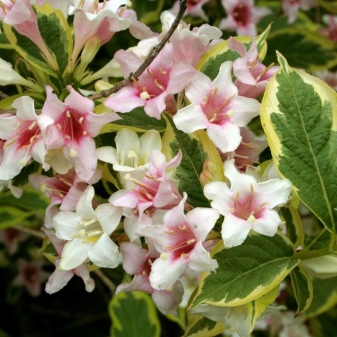
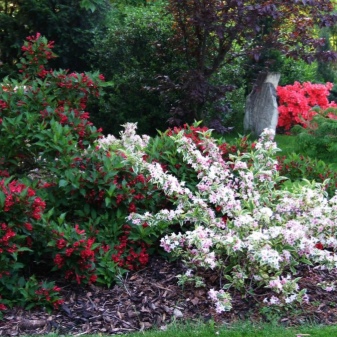
Purple weigela It has a compact dense crown and inflorescences of a juicy pink color. It should be noted that over time, the color of the plant changes, its saturation increases. The length of each bell is 0.03–0.04 m. It blooms twice a year if weather conditions permit.
As for the weigela "Marjorie”, Then this plant is distinguished by extremely fast growth and reaches a height of 1–1.5 m. Green leaves, similar to a drop of water, turn yellow with the onset of autumn. Frost resistance "Marjorie" can reach 35 degrees of cold. Shelter with spruce branches is necessarily used to protect against hypothermia. The size of the flowers is 0.035–0.04 m.
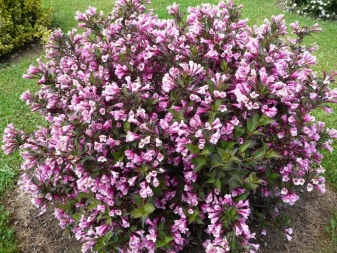

Noteworthy and grade "Carnival"... This variety of weigela can bloom twice during the season, but smaller flowers appear the second time. The height of "Carnival" sometimes reaches 3 m, while the diameter of the bush is 3.5 m. The leaves are elongated and pointed at the ends. Shoots grow straight, they fall down and form an arch.
Differs in attractiveness and grade "Coins"... It is appreciated for its cute bell-shaped flowers and for the graceful foliage of its original color. The plant is relatively low, but this does not prevent it from being included in the list of the most ornamental horticultural crops. The leaves resemble a slightly pointed ellipse. There are foliage of pink-green and dark green color. The border of the leaves has a white-pink tone. Dissolution of flowers, similar to small bells, occurs in May.The culture is suitable both as an accent plant and as an elegant support for any floral arrangement.
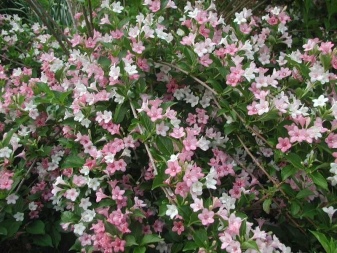
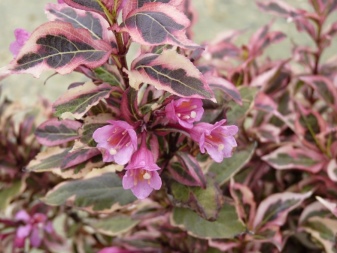
As for the variety Middendorf, then this plant reaches a height of 2.5 m. The crown is proportional and rather resembles an oval. The size of the flowers is not too large, the seeds can be expected to ripen in September and October. May bloom lasts 20-25 days. In good weather, the second bloom begins in the last days of August. Although the Weigela Middendorf is considered the optimal choice for harsh conditions, it can still suffer from cold winds. This circumstance will make it possible to choose the optimal landing site. Basically, propagation is carried out by cuttings or seeds.
Wood cuttings are not very effective. Sanitary pruning should be done annually to avoid negative consequences.

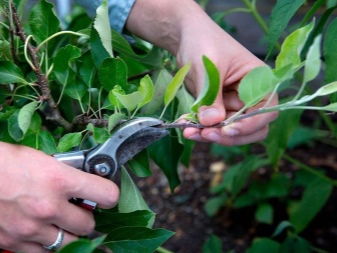
You can complete the overview of varieties on the variety Wings of Fire... This crop appeared in 2000 and is the result of many years of research by Dutch breeders. In most cases, the growth of "Wings of Fire" reaches 0.9–1.2 m. Only individual specimens can grow up to 1.5 m. The crown section under normal conditions can be 1–1.5 m. The plant can withstand a rather serious stagnation water in the soil. "Responsiveness" to feeding is relatively high. Wind and rain have almost no effect on the shape of the bush.
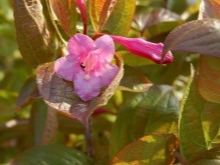
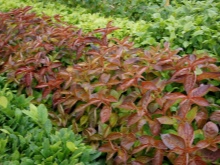
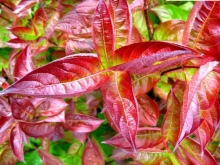
Important! Whichever variety is chosen, you must immediately carefully choose a place for planting it. Transplanting weigela to another place is quite difficult and risky. If this is done, then only in spring, and not in autumn, so that the plant has time to adapt to changing conditions and the coming bad weather.
What can be planted nearby?
Weigelu on the site is planted next to various plants. The optimal visual effect is achieved in the vicinity of plants such as:
- various coniferous crops;
- spirea;
- cotoneaster;
- barberry;
- phlox;
- petunia and other flowers of the annual cycle.
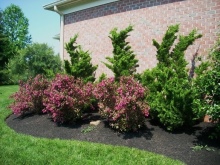
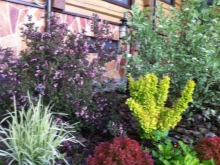
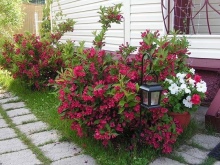
But it must be borne in mind that weigela perfectly helps the development of aphids. Therefore, it can become a source of danger to plants that suffer from this insect. But it is allowed to plant a shrub near the following plants:
- Japanese quince;
- barberry;
- juniper;
- hyacinth or dwarf iris.
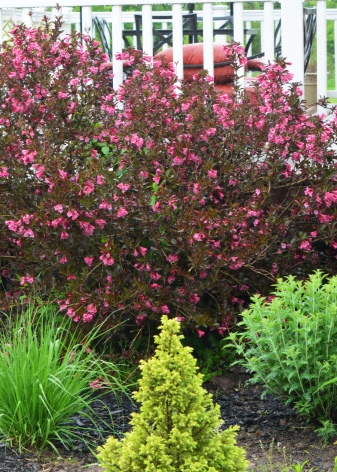
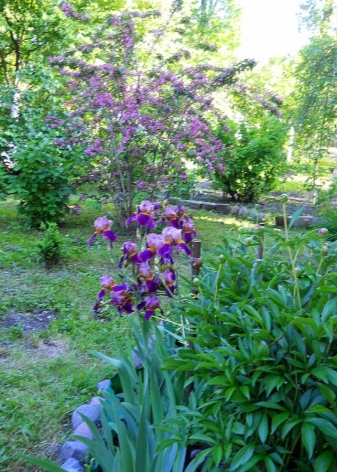
How to take care of it properly?
Top dressing
Competent care of weigela is largely determined by the correct use of fertilizers. The introduction of dressings can be postponed if, when planting the plant, they were originally laid in the pit. Will have to wait 2 years. The first feeding in the third year of life is carried out in early spring. At this point, it is required to use a combined mineral fertilizer. Due to the inclusion of nitrogen compounds in its composition, the accelerated development of green mass is ensured. A suitable option would be ammofosk or diammophosk. Separate application of different fertilizers is also allowed.
The right time for the second feeding is the end of May and the first days of June. Superphosphate is used along with potassium sulfate. But nitrogen fertilizers can not be used categorically. Along with slowing down the formation of woody tissues, they contribute to the active spread of rot.
Instead of nitrogenous compounds, various phosphorus compounds must be used. Thanks to them, the plant will bloom abundantly and as long as possible. Importantly, phosphorus fertilization will provide resistance to winter conditions.
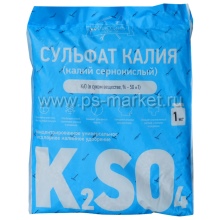


The third feeding is carried out in the autumn months. Then the following fertilizers are used:
- "Kemira";
- potassium sulfate;
- potassium chloride;
- 0.2 kg of wood ash per square meter.

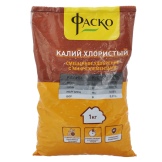
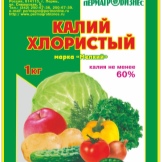
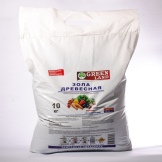
Watering
Weigela appreciates decent hydration, without it she cannot develop normally. However, waterlogging affects this crop extremely negatively. Therefore, the care should be moderate, it is very important to maintain a balance. Mulching helps to avoid too rapid evaporation of moisture. Usually, peat and sawdust are used as mulch, but some gardeners use pebbles of a very fine fraction.
Pruning
The procedure is needed, first of all, to improve the aesthetic qualities of the bush. In early spring, all shoots are carefully examined. Having found the slightest black tip, they immediately cut it off. After swelling of the kidneys, the next stage of pruning must be carried out. 0.01–0.015 m recede from the revived buds, otherwise the deformed places will rot.
Sanitary pruning should be completed within 14–20 days of the last frost. Be sure to remove shoots, where the buds appear only on the tops, which indicates a strong obsolescence of the branch. Weigela's hardiness is quite high so that the plant can be pruned throughout the growing season.
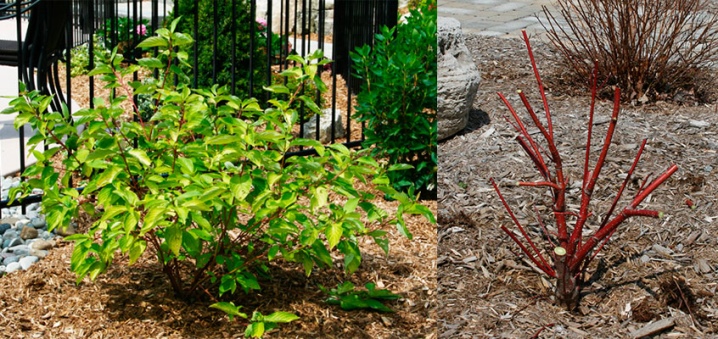
But summer is not very suitable for such a procedure, since the foliage interferes with correctly assessing the appearance of the shoots.
Collecting seeds after flowering
Seed picking time begins in November. We must wait until the boxes are covered with characteristic cracks. To completely avoid the loss of seeds, from the beginning of autumn, the boxes are wrapped with gauze or other cloth with a thin cell, while the air must pass freely. After removing the seeds from the cut boxes, they must be dried. Storage is allowed for a maximum of two years.
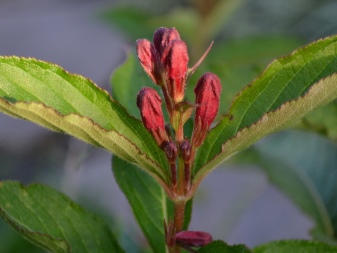
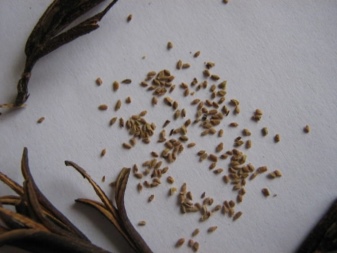
Preparing for winter
When preparing weigela for winter, it is important to take care of the normal moisture of the root system. If the weather is rainy, you can already achieve excellent hydration. But against the background of dry autumn, it is necessary to additionally irrigate the plant. And also you need to take care of maintaining full root growth. Watering the shrub is required whenever the soil is completely dry.
The best option during preparation for wintering is drip irrigation. The last pruning should be done approximately 3 weeks before the onset of frost. All sections with cuts are disinfected with garden pitch. The tool used to carry out the work should be initially disinfected.
A frame shelter should be formed if the height of the bush does not exceed 0.4 m, otherwise you will have to use a frameless option.
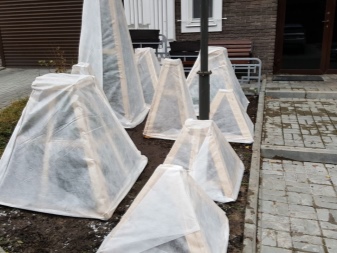
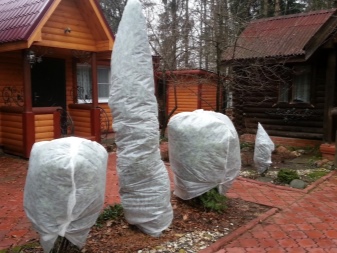
Diseases and pests
Weigelu can be eaten by such pests as thrips, aphids, bear and leaf-eating caterpillar. You can recognize the invasion of bears by the appearance of many minks around the bush. To combat them, kerosene or a strong soap solution is suitable. Of the synthetic formulations, Thunder is most often recommended. Aphids are eliminated with garlic or wormwood solution. But if the entire crown or a noticeable part of it is already affected, it is better to use potent factory fungicides.
Of the diseases, the following are dangerous:
- various types of spotting;
- gray rot;
- plant rust.
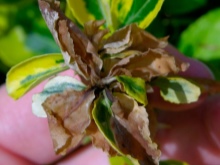
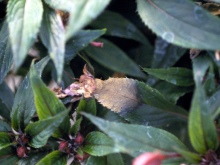
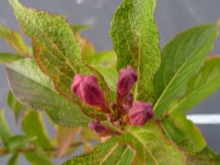
Possible problems
Occasionally, weigela does not bloom, although it seems to grow normally. Determining the cause is sometimes difficult even for experienced agronomists. In some cases, transplantation helps, eliminating the influence of one or another factor unpredictable in advance. To combat insect infestations, only modern safe insecticides should be used. They are quite effective, while not inferior to older drugs, which are characterized by high toxicity.
To improve acidic soils, weigels are advised to use wood ash and dolomite flour before planting.

For planting and proper care of the weigela, see below.



































































The comment was sent successfully.